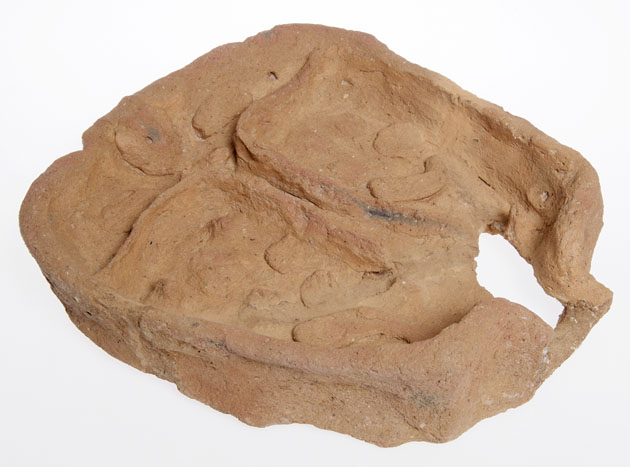Details
- Object type
offering tray
- Place Associated
Africa, Egypt, Middle Egypt, Harageh, Tomb 400 (place found)
- Date
First Intermediate Period, 9th-11th Dynasty, 2160-1985
- Materials
clay
- Dimensions
overall: 345 mm x 315 mm x 80 mm 3602 g
- Description
-
This offering tray has been crudely shaped from clay to represent the courtyard of a house spread with offerings of food for the dead. It functions as a soul house where the ka of the deceased can come to feast. There are prime cuts of meat, such as the foreleg of an ox, bread and vegetables. The tray itself is divided into sections to form a T-shaped channel leading to a central spout on one side to enable a libation to be poured. It would have been placed in the tomb of the deceased so that the ka could inhabit it and consume its food and drink magically.
It dates to the 9th–11th Dynasty (First Intermediate Period) and was found in tomb 400 at Haraga, Upper Egypt, in 1913-1914, by Professor W.M. Flinders Petrie of University College London, who presented it to Glasgow Museums in 1914 for the J. May Buchanan Collection.
- Credit Line/Donor
Gifted by Sir W.M. Flinders Petrie, 1914
- ID Number
1914.64.an
- Location
In storage
